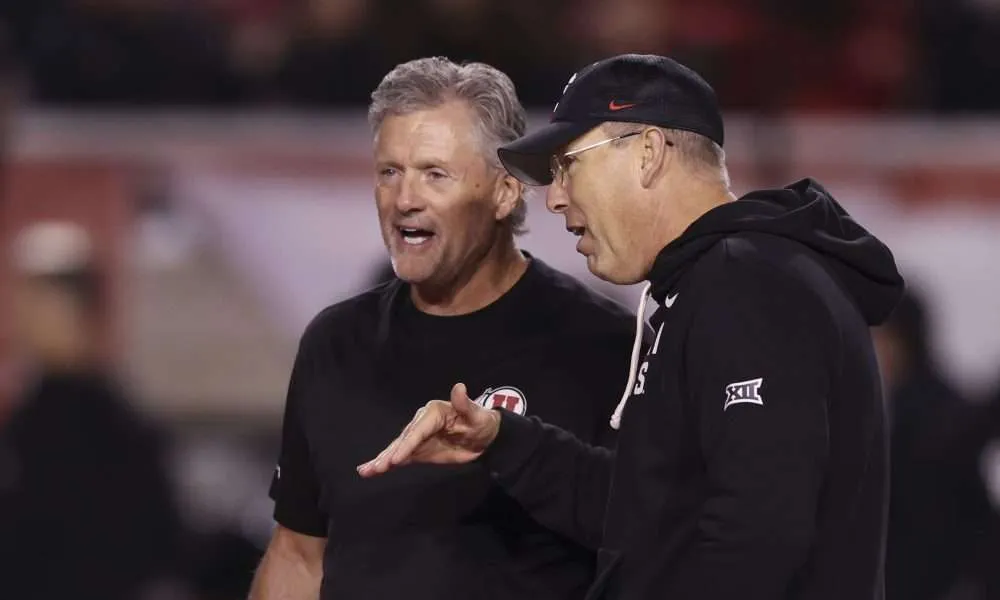Rec Sports
Unified Track and Field Competition unites kids of all abilities with sports
TOPEKA, Kan. (WIBW) – Kids of all abilities got outside and active at the inaugural Unified Track and Field Competition.
This event was organized by Special Olympics Kansas in order to break down barriers in sports.
“Today is all about getting active and being together for inclusion,” said Kenneth Wilson, communications manager for Special Olympics Kansas.
Inclusion was the name of the game as kids with and without disabilities got to compete together in various events, including the 100-meter, 200-meter, and 400-meter races.
This event was open to students across Shawnee County and Kansas City.
“We have over 50 unified pairs from all over Eastern Kansas. It’s just a wonderful event for everyone to participate in and celebrate inclusion,” Wilson said.
Miranda Scallard put her skills to the test in the 200-meter race.
“It felt really good and really exciting because I didn’t think I was going to be able to do the 200 because I haven’t really run a lot,” Scallard said. “But after I did it, I felt pretty happy.”
Now, she feels like she can do anything.
“It’s just awesome to see the kids running and competing against one another and getting their medals,” said Caroline Meyers, a member of Special Olympics Kansas. “They’re so proud of their accomplishments and being able to see that just fills my cup.”
The Unified Track and Field Competition is a special opportunity that opens up the world of sports to all kids.
“It provides a spotlight for not only the schools, but for those who may not have an opportunity to put themselves out there,” Wilson said.
As the day came to a close and medals were awarded, participants left with a sense of accomplishment and reminder that anyone can be a winner.
Copyright 2025 WIBW. All rights reserved.
Rec Sports
Guardian caps, new helmets aim to improve safety for young football players

CHARLESTON, W.Va. (WCHS) — New and improved helmet technology was approved by the National Operating Committee on the Standards for Athletic Equipment.
The helmet is lighter and more suitable for youth. While this lighter helmet won’t be available until 2027 and won’t be mandatory, youth leagues around the area will be more than willing to adopt this new equipment to protect the youth.
“I don’t see how you can’t,” former college and NFL football cornerback Carl Lee said. “For the youth kids to play.”
Since retiring from playing and coaching, Lee deals directly with fitting youth for their helmet sizes in South Charleston. Lee does everything he possibly can to make sure the helmet is a perfect fit.
But that’s just part of the problem.
“You got a kid that’s about to your knees, and while the helmet may fit, it’s like two bricks,” Lee said. “He can’t even hold his head up. There has to be more attention paid to youth football and the gear that you’re providing for them.”

Efforts are underway to get guardian caps mandated for middle and high school players. (WCHS)
Everyone wants to be safe but having the ability to provide the newest and best equipment is another challenge that some leagues may struggle to provide. Lee said South Charleston is lucky enough to be one of the leagues that has a budget to provide the safest and best facilities for their kids.
Due to others teams’ and leagues’ budgets, the safety and equipment some kids may get, isn’t on par with what others may receive
“It doesn’t create safety across the league as a whole,” Lee said. “I think us being safe and doing the best we can to be safe, isn’t good for the league. What needs to happen is the league itself, we have to find ways to make every child that plays safe.”
That particular helmet is not available until 2027. Teams right now are doing what they can to provide an extra layer of safety to their kids though the use of newer helmets and mostly guardian caps – a decision that many coaches and league presidents didn’t take lightly.
“We made this decision last year after the tragedy that happened to the young man in Madison Middle,” youth league president David Hopper said. “We bought them the day or the week after that we heard about it on the news.”
The tragedy Hopper is talking about is that of Cohen Craddock in August of 2024. At just 13 years old, Craddock died after a collision at practice caused a brain bleed and swelling, leading to a lack of oxygen.
It sent shockwaves through communities across the state. Craddock’s father continues fighting in his son’s honor in an attempt to get mandatory guardian caps for all middle and high school practices.

The extra protection eases the minds of parents who want to prevent future tragedies from happening to other young athletes.
“I’ve been in the league for about four years now,” Melissa Allen said. “We’ve seen some pretty nasty hits. It definitely eases your mind as a parent to know that there is a little bit more protection. This year, we have seen a lot less injuries. I definitely, think they’re a great addition.”
According to the National Football League, guardian caps absorb 11-12% of impact force and were made mandatory during practice as they try to crack down on concussions and head trauma at the professional level. These protective caps have contributed to a nearly 50% reduction in concussions.
The caps can run roughly $80 per player, which could be a burden for parents who may already be facing financial hardships. Luckily for Ripley Little League, local businesses stepped in and helped provide the caps, helping provide the youth football Vikings the all-important extra layer of protection

“This is our youth,” Allen said. “This is who grows up and takes care of your businesses, and these parents are going to support your business.”
Football is a core memory for millions growing up. Many wouldn’t trade the experiences and life lessons they learned, but parent’s minds are at ease knowing that safety continues to be at the forefront of every league.
“I let my kid play before there were guardian caps,” Allen said. “I do wish there were guardian caps back when he played, but I would let my kid play just because of what football teaches them. It does ease your mind as a parent that there’s some extra protection there now. I love football, I love what it teaches my kid. It teaches them how to be a team player, it teaches them that it’s not only you. You have to work together with people and it teaches you a lot about leadership.”
“I think there’s a danger with anything,” Hopper added. “Just walking down the sidewalk there’s a danger to it. Football builds character. Football builds young men. There’s a trend today to let your kids be safe, be coddled, but it’s important to let them do hard things and football I think is the epitome of that.”
Rec Sports
Monumental Sports & Entertainment Steps Up D.C. Students’ Access to Athletic Shoes with “District Kicks” Initiative
Year-long effort as part of company’s “District of Play” program will provide Under Armour footwear to nearly 6,500 students across DC Public Schools
WASHINGTON, D.C. (December 21, 2025) — Monumental Sports & Entertainment (MSE) today announced “District Kicks,” one of the year two marquee initiative of the District of Play platform, led by the Washington Wizards in partnership with Under Armour and DC Public Schools (DCPS).
Building on the success of last year’s inaugural effort, District Dribble, which placed nearly 30,000 basketballs into the hands of every DCPS student in PK3 through 5th grade, District Kicks shifts the focus to essential athletic gear—ensuring student-athletes can take part in sports safely and with pride.
The district-wide, multi-phase initiative will deliver Under Armour footwear to all DCPS high school athletes and celebrate milestone moments for sixth-grade students enrolled in DCPS 6th Grade Academies.
“When I got my first basketball as a kid in Brooklyn, that single piece of equipment unlocked everything that followed—confidence, belonging, and the belief that sports could shape my future,” said Ted Leonsis, founder, chairman, managing partner and CEO of Monumental Sports & Entertainment. “District Kicks is built on that same idea: when you give young people the right tools, you give them the ability to dream bigger. We are proud to partner with Under Armour and DCPS to ensure DC students can step onto the court or field ready to compete and believe in what’s possible.”
“We are the Sports Capital not only because of our professional teams, but also because of the opportunities we create for our children,” said Mayor Muriel Bowser. “This initiative is one more way we can make sports more accessible to more students, and we’re grateful for Monumental’s continued partnership and commitment to our city’s young people.”
About District Kicks
Throughout 2026, District Kicks will come to life through a full year of athletic shoe distribution and programming.
High School Sport-Specific Footwear: District Kicks will provide sport-specific Under Armour footwear to all high school student-athletes across roughly 22 DCPS schools, totaling approximately 5,200 students. Shoes will be delivered directly to school campuses and will be distributed in alignment with athletic seasons, beginning with spring sports in March 2026, followed by fall sports in August and winter sports in November.
High School Pep Rallies: Each seasonal distribution will be anchored by a flagship pep rally at a featured high school, creating moments of recognition and visibility for student athletes.
6th Grade Athletic Footwear: District Kicks will provide all DCPS 6th graders enrolled in 6th Grade Academies with Under Armour athletic sneakers, reaching more than 1,200 students across 11 DCPS campuses. Available in multiple styles and colorways, the footwear is designed to help students feel comfortable, confident, and ready to move, play, and take part in school sports and activities.
6th Grade Kick Off Event: MSE will distribute the footwear as part of a celebration for 6th graders enrolled in 6th Grade Academies on March 3, 2026, at CareFirst Arena. The event will gather students for a high-energy, pep rally-style celebration, complete with interactive sports experiences and career-based learning opportunities. MSE will cover transportation and logistics for all participating schools, ensuring every student can be part of the day.
“Engaging our scholars throughout their transition into middle school takes commitment and creativity,” said DCPS Chancellor, Dr. Lewis D. Ferebee. “In our 6th Grade Academies, students are given the tools to excel inside and outside of the classroom. DCPS is grateful to partner with Monumental Sports and Under Armour to provide resources to young people so they can thrive in programming that deepens their connection to school.”
About Under Armour’s Project Rampart
Project Rampart is an initiative by Under Armour to elevate the student-athlete experience and improve academic outcomes through the power of sport. Beginning in Baltimore in 2017 and having since expanded to Oakland and Washington DC, Project Rampart is a blueprint that ensures student-athletes have access to upgraded facilities, best-in-class apparel, leadership development, and coach training through specialized programming.
To learn more, visit about.underarmour.com/Purpose/impact/project-rampart.
About District of Play
Launched in 2024 as part of the Capital One Arena reimagination, “District of Play” is MSE’s commitment to expanding access to youth sports and wellness across DC. “District of Play” invests in youth sports infrastructure, creates new opportunities for underserved youth, and drives community impact through the Capitals, Wizards, Mystics, Capital City Go-Go, Monumental Sports Network, and the MSE Foundation.
In its first year, the initiative reached more than 200,000 residents, earning recognition from Fight for Children and a nomination for a 2025 ESPY Sports Humanitarian Award. Learn more about “District of Play”’s momentous first year of impact in the 2024-25 annual report here.
About Monumental Sports & Entertainment
Monumental Sports & Entertainment is America’s leading integrated sports and entertainment company and is ranked as one of the most valuable globally. Our people, players, teams, and events bring excitement and joy to millions. We invest and innovate to consistently raise the game so we can deliver extraordinary experiences that will inspire and unite our community, our fans, and our people. To learn more, please visit monumentalsports.com.
About Under Armour, Inc.
Under Armour, Inc., headquartered in Baltimore, Maryland, is a leading inventor, marketer, and distributor of branded athletic performance apparel, footwear, and accessories. Designed to empower human performance, Under Armour’s innovative products and experiences are engineered to make athletes better. For further information, please visit http://about.underarmour.com.
Rec Sports
Suns, Mercury pros join youth for hoops to celebrate World Basketball Day
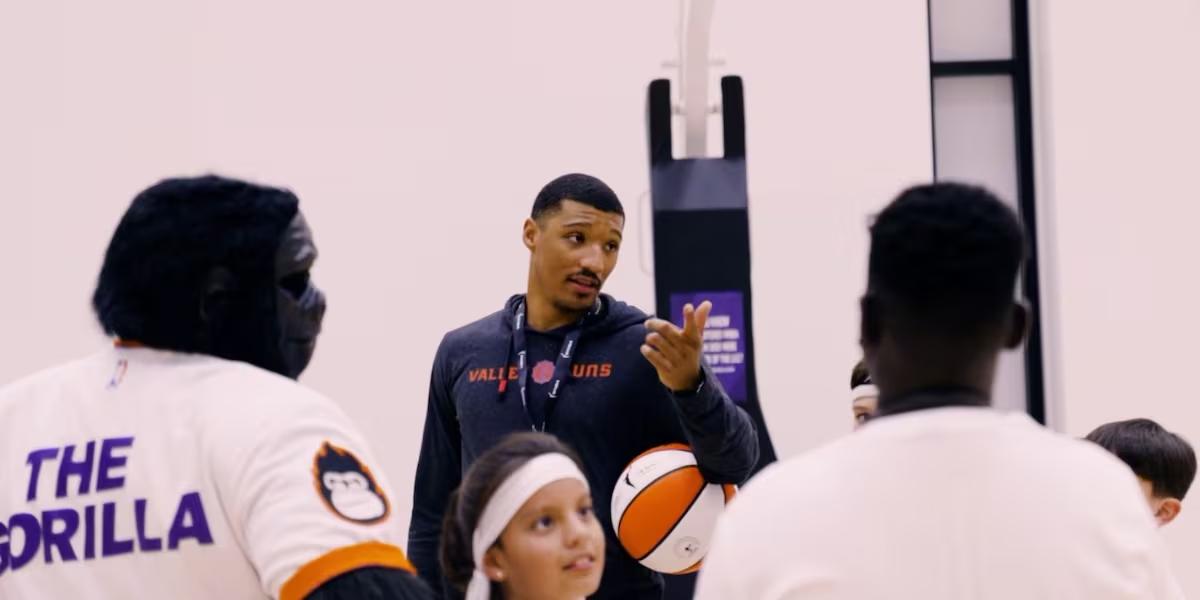
PHOENIX (AZFamily) — The Phoenix Suns and Phoenix Mercury marked World Basketball Day with a basketball clinic that brought kids face-to-face with two pro players on Tuesday.
The Suns/Mercury Foundation hosted the event, which brought the Suns’ Nick Richards and the Mercury’s Natasha Mack to answer questions from children in a Q&A.
Richards, who grew up in Jamaica, and Mack, a dual citizen of Montenegro, shared stories about playing overseas and how basketball connects people everywhere.
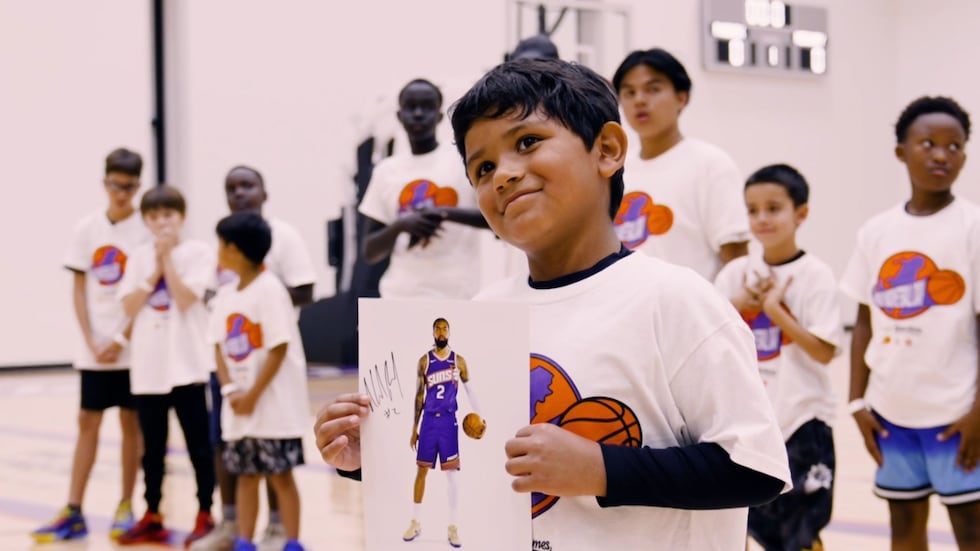
After the chat, the pros and kids rolled up their sleeves and shot hoops alongside the mascots.
World Basketball Day, now in its third year, rallies the NBA family and the global basketball community.
Partners like the YMCA, FIBA, USA Basketball, the NCAA, and the Naismith Hall of Fame joined in with clinics, social campaigns, and activities worldwide.
See a spelling or grammatical error in our story? Please click here to report it.
Do you have a photo or video of a breaking news story? Send it to us here with a brief description.
Copyright 2025 KTVK/KPHO. All rights reserved.
Rec Sports
3 kids steal and crash car into home after watching YouTube tutorials, police say

NEWBURGH HEIGHTS, Ohio (WOIO/Gray News) – Three children, ages 8, 11 and 12, stole a car and crashed it into a home after watching how-to videos on YouTube, according to police.
On Saturday, officers were in pursuit of a stolen car in Ohio when it crashed into a men’s recovery home, causing minor damage.
Officers caught the three children who tried to run away after crashing the car.
Thankfully, no one was injured.
Newburgh Heights police told WOIO the 11-year-old was driving the car.
The children allegedly told police that they watched YouTube videos on how to steal cars.
Police said the children were later released to their parents and charges will be filed in juvenile court.
Copyright 2025 WOIO via Gray Local Media, Inc. All rights reserved.
Rec Sports
Binghamton mayor talks housing, public safety

This week, JoDee Kenney sits down with Binghamton Mayor Jared Kraham.
Binghamton Mayor Jared Kraham takes the Spectrum News team on a walk-and-talk to various projects around the city. Mayor Kraham talks about the overseeing of significant developments in Dickinson, including the largest housing construction project, Town and Country apartments, with 256 units of affordable housing. He shares how the project is valued in tens of millions and features modern, energy-efficient units, and addresses past issues of crime and poor housing conditions. Mayor Kraham highlights how the city is also developing a new Recreation Center, repurposed from a local church, to serve as a hub for youth sports and community activities. He shares how the recreation center includes a full-size gym, classroom space, and a commercial kitchen. Mayor Kraham explains that these initiatives aim to enhance community life and provide permanent, affordable housing options.
Mayor Kraham also talks about community policing and emphasizes the need for increased staffing to allow officers to engage with the community effectively. He highlights the city’s low crime rate, attributing it to community policing, gun violence reduction initiatives funded by $1 million from the American Rescue Plan Act, and the use of advanced technology like license plate readers and street cameras. Mayor Kraham also details the revitalization of Clinton Street, a historic downtown area, through a $10 million state initiative to create a walkable, eclectic district that supports housing and regional tourism.
And finally, Mayor Kraham talks about being inspired by his father’s government service and his own interest in public communications. He discusses being a Syracuse University dual major in political science and broadcast journalism and emphasizes the importance of local politics and student engagement. He highlights his efforts to support small businesses, influenced by his experience working at his parents’ furniture store. Mayor Kraham also talks about his passion for local music, dining, and sports, and outlined his 2026 goals: revitalizing Clinton Street, enhancing public safety, and addressing affordable housing to foster neighborhood development.
You can watch the full interviews above. And be sure to tune in for a look inside the biggest issues impacting upstate New York, on In Focus with JoDee Kenney — every Sunday on Spectrum News 1.
Rec Sports
Power of basketball to connect people around the globe celebrated with World Basketball Day
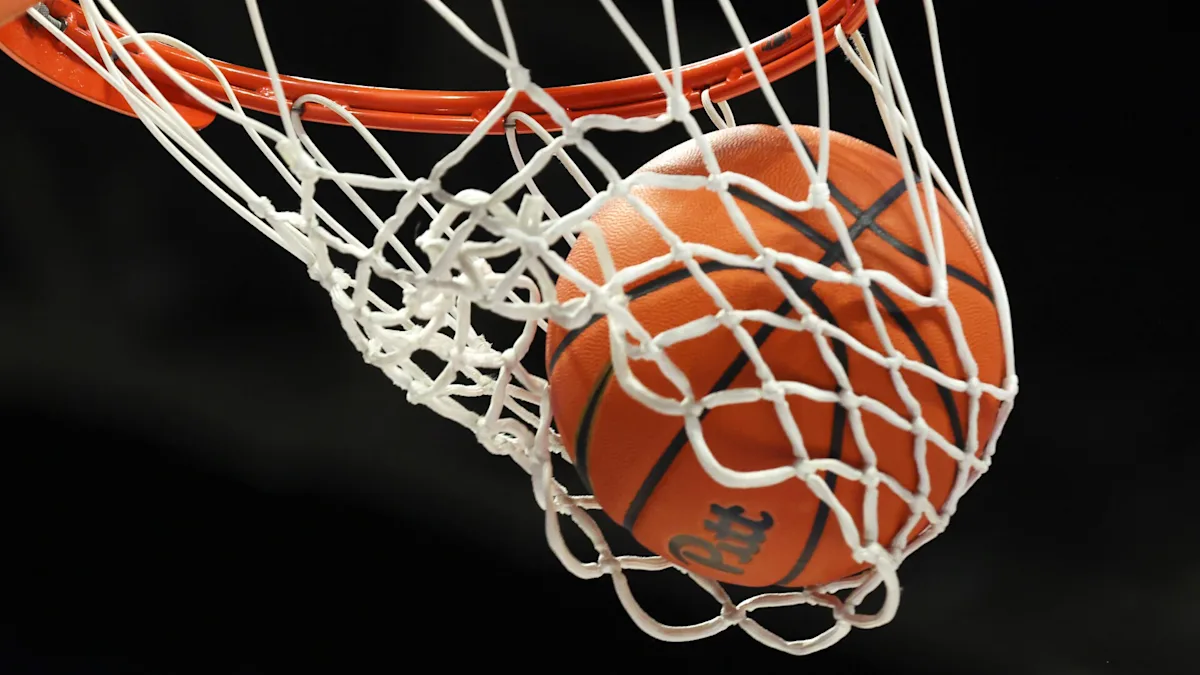
Can basketball be a force that helps bring a divided nation, a divided world together?
That’s the dream of World Basketball Day. A day — designated by the United Nations to be commemorated every Dec. 21 — where we celebrate the power of basketball to unite communities and connect people around the world.
Advertisement
“There’s increasingly few spaces left where we humanize each other, where we actually spend time face-to-face, eye contact, wordlessly negotiating and sharing and creating space with and between each other — doing the kinds of intimate, continuous, fluid communication that the space of a basketball court fosters,” said David Hollander, an NYU professor who helped create World Basketball Day. “The game itself is an empathy lab. And so, yes, I believe it is one of the greatest exercises that people can engage in to begin to knit back together the social fabric.”
It’s a dream shared by the NBA and people who love basketball around the globe — and it’s a chance to give back to the community through the game.
“World Basketball Day is a chance to celebrate the game and impact it has on people everywhere,” the Celtics’ Jayson Tatum said. “Basketball has had such a positive influence on my life, and I hope I can pass along the joy and skills I’ve learned, both on- and-off the court, to the next generation.”
The NBA is doing this in part by announcing the extension of its longstanding relationship with the YMCA, collaborating on year-long youth basketball and community-focused programming that will reach 6 million youth in the next year. World Basketball Day also means events to connect with youth around the nation and around the globe.
Advertisement
“World Basketball Day takes on a special meaning this year as we commemorate the 175th anniversary of the YMCA, where the sport was first invented 134 years ago,” NBA Commissioner Adam Silver said. “We are thrilled to join our many friends in the basketball community to celebrate the game’s impact and influence around the world.”
What is World Basketball Day?
World Basketball Day is the brainchild of Hollander, an NYU professor with the Preston Robert Tisch Institute for Global Sport. Holland teaches a course at NYU called “How Basketball Can Save the World.”
“It’s a very popular elective that treats basketball like a philosophy,” Hollander said. “I created principles that I believe basketball stands for — the way you play basketball can be understood as a really good guide for how we can behave with each other. The way the game was intended to be structured can tell us a lot about how we ought to structure a society, and it’s a game intrinsically of hope.”
Advertisement
He eventually turned that course into a book, in which he drafted a UN resolution for World Basketball Day. That idea took off in a way he did not fully expect.
“Basketball was always intended to be stateless, borderless, global right from the very start,” Hollander said. “And as the world tries to solve the problems that only a whole world can solve, I suggested that we ought to start somewhere where the whole world is happy and the whole world comes together, and the whole world agrees. And, I said, that place is basketball, and it should have a day.
“That’s how it began.”
World Basketball Day was established in 2023 by the United Nations. Not coincidentally, World Basketball Day is observed each year on Dec. 21, the date in 1891 that Dr. James Naismith hung up the peach baskets and first introduced the game of basketball at the YMCA in Springfield, Mass.
Advertisement
Part of what World Basketball Day has become is a focus on the future and connecting people. For example, last week marked the third annual United Nations diplomats basketball game, in which more than 60 diplomats from 30 countries played pickup at the local YMCA.
“In other words, these peacemakers are actually doing the thing that I hope basketball on a grand scale achieves,” Hollander said.
It’s not just the NBA and the United States celebrating this, it is FIBA — the international governing body of basketball — and its coaching clinics and camps in Africa on this day. It’s local hoopers and content creators from Australia, Indonesia, Japan and the Philippines featuring World Basketball Day content across the NBA’s localized channels in those countries.
“Basketball has always been global,” Hollander said. “Dr James Naismith sent emissaries to teach basketball in 1895, as soon as he could right after he invented the game, to Europe to Australia, to China to South America. So it is no surprise to me that coming from all corners of the world are some of the most eloquent speakers of the language of basketball.”
Advertisement
That language of basketball and how it can be a unifying force deserves to be celebrated. And, much like Christmas, we could use more of that force and spirit all year-round.
-

 Motorsports2 weeks ago
Motorsports2 weeks agoSoundGear Named Entitlement Sponsor of Spears CARS Tour Southwest Opener
-
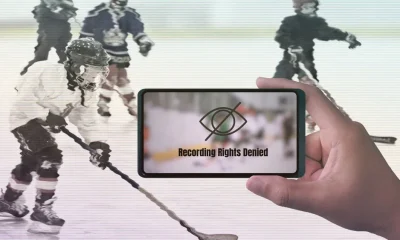
 Rec Sports2 weeks ago
Rec Sports2 weeks agoBlack Bear Revises Recording Policies After Rulebook Language Surfaces via Lever
-
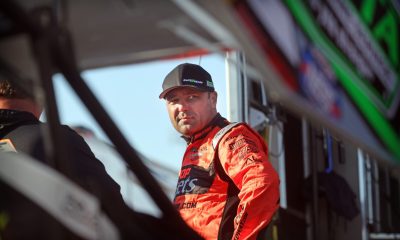
 Motorsports2 weeks ago
Motorsports2 weeks agoDonny Schatz finds new home for 2026, inks full-time deal with CJB Motorsports – InForum
-
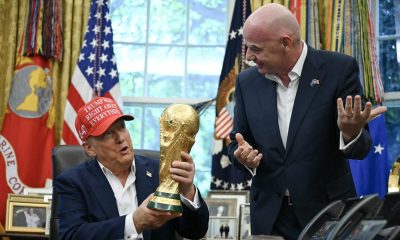
 Rec Sports2 weeks ago
Rec Sports2 weeks agoHow Donald Trump became FIFA’s ‘soccer president’ long before World Cup draw
-
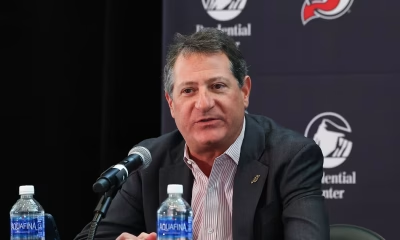
 Rec Sports2 weeks ago
Rec Sports2 weeks agoDavid Blitzer, Harris Blitzer Sports & Entertainment
-
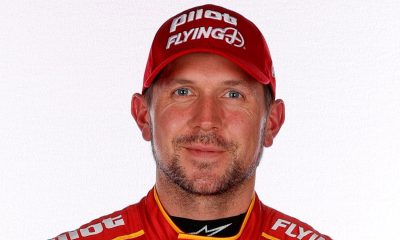
 Motorsports2 weeks ago
Motorsports2 weeks agoJR Motorsports Confirms Death Of NASCAR Veteran Michael Annett At Age 39
-

 Motorsports2 weeks ago
Motorsports2 weeks agoRick Ware Racing switching to Chevrolet for 2026
-
Sports2 weeks ago
West Fargo volleyball coach Kelsey Titus resigns after four seasons – InForum
-
Sports2 weeks ago
Elliot and Thuotte Highlight Men’s Indoor Track and Field Season Opener
-

 Sports2 weeks ago
Sports2 weeks agoWomen’s track and field athletes win three events at Utica Holiday Classic


































